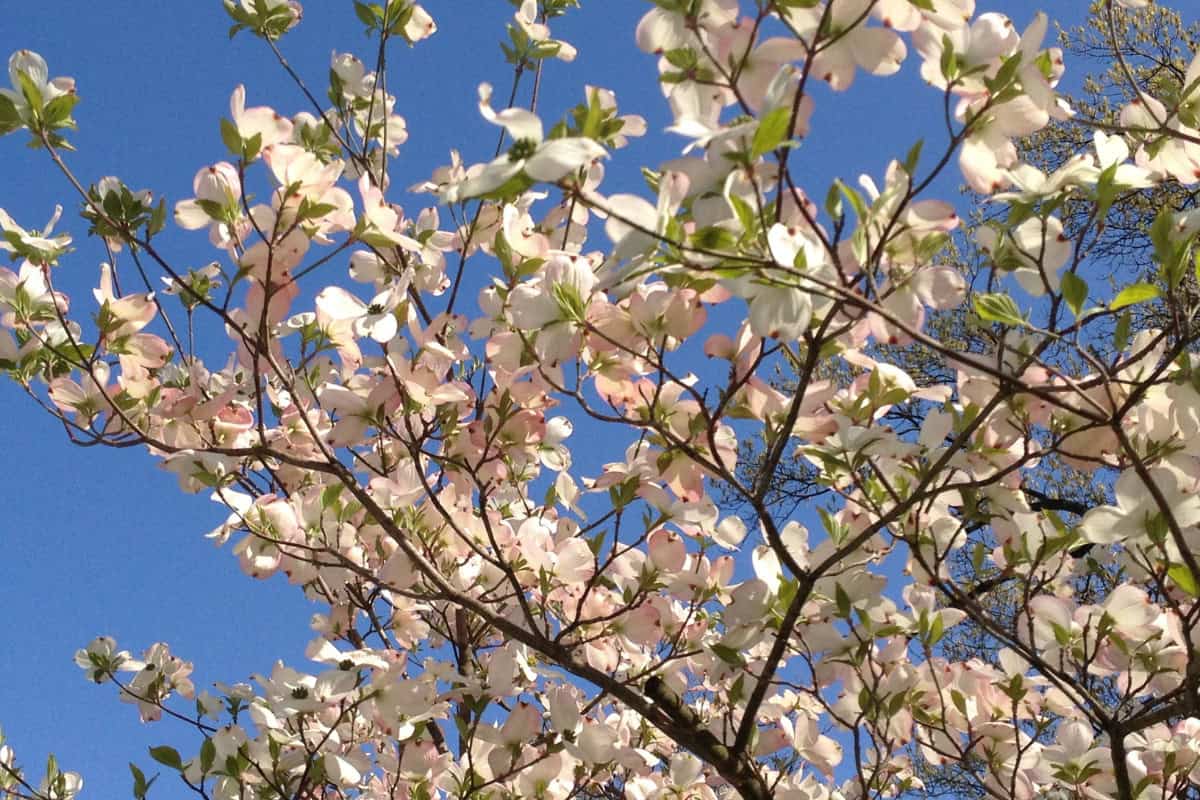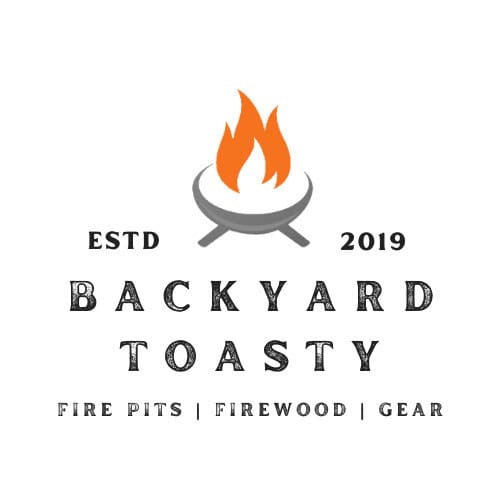
This comprehensive Dogwood firewood profile explores the ornamental jewel of the forest, delivering 18,000-21,000 BTUs per cord with distinctive burning characteristics and unique availability considerations.
Known for its stunning spring blooms and beautiful fall color, Dogwood offers good heat output from small-diameter pieces when available from storm damage or necessary tree removal operations.
Quick Reference Stats
- Wood Type: Hardwood (deciduous)
- BTU Rating: 18,000-21,000 BTUs per cord
- Ease of Splitting: Easy to Moderate (4/5 scale)
- Seasoning Time: 6-10 months
- Smoke Production: Low
- Spark/Pop Factor: Low
- Scent Profile: Mild – Clean, subtle floral notes when fresh
Overview & Identification
Dogwood represents the ornamental aristocrat of firewood, offering good heat output from one of America’s most beloved flowering trees.
This dense hardwood provides reliable burning performance when available, though its primary value as an ornamental specimen means firewood use is typically limited to storm damage, disease management, or necessary removal situations.
The distinctive flower bracts, opposite leaves, and characteristic bark make identification straightforward for this understory jewel.
Common Names: Flowering Dogwood, Eastern Dogwood, American Dogwood
Scientific Name: Cornus florida (family Cornaceae)
Tree Characteristics: Small deciduous tree reaching 15-30 feet with distinctive white flower bracts in spring, opposite oval leaves, and characteristic blocky, alligator-hide bark pattern. Produces bright red berries and spectacular fall color.
Geographic Distribution
Where You’ll Find It: Eastern United States from Maine to northern Florida, west to eastern Kansas and Texas. Most abundant in understory of mixed hardwood forests
Availability: Limited availability primarily from storm damage, tree service operations, and necessary removals due to disease or construction
Growing Conditions: Prefers partial shade and well-drained, acidic soils. Common understory tree in mixed hardwood forests. Increasingly threatened by dogwood anthracnose disease.
Burning Characteristics
Heat Output & Performance
- BTU Content: Good performance delivering solid heat output despite small tree size
- Burn Duration: Burns steadily with good heat retention relative to piece size
- Coaling Properties: Forms adequate coals that maintain heat reasonably well
- Flame Characteristics: Produces steady, hot flames with consistent heat delivery
Ignition & Fire Management
- Ease of Lighting: Lights well when properly seasoned – easier than dense hardwoods
- Best Fire Stage: Excellent secondary fuel and good for maintaining established fires
- Burn Rate: Moderate consumption rate provides good heat output relative to size
- Heat Consistency: Reliable heat output with consistent temperature delivery
Sensory Experience
Smoke Profile
- Smoke Volume: Low smoke production when properly seasoned
- Smoke Color: Clean, light smoke with good dispersal characteristics
- Smoke Flavor: Clean, mild flavor suitable for cooking applications
- Creosote Production: Low due to clean burning characteristics
Sound & Visual
- Crackling/Popping: Pleasant, gentle crackling with minimal aggressive popping
- Sparking Tendency: Very low spark production provides excellent safety profile
- Flame Appearance: Attractive, steady flames with appealing visual characteristics
Aroma
- Burning Scent: Clean, mild fragrance with subtle floral notes when freshly cut
- Pleasant Factor: Pleasant and unobtrusive – doesn’t overwhelm other scents
- Intensity: Light aromatic presence that’s noticeable but gentle
Processing & Preparation
Splitting Characteristics
- Ease of Splitting: Generally easy splitting due to small diameter and straight grain
- Grain Pattern: Straight, fine grain that yields to splitting with minimal effort
- Tools Needed: Light splitting axe or hatchet adequate for small-diameter pieces
- Best Splitting Conditions: Splits well both green and seasoned due to manageable size
Seasoning Requirements
- Drying Time: 6-10 months for optimal burning due to moderate density
- Moisture Content: Reaches target 15-20% moisture content at moderate pace
- Seasoning Tips: Small diameter pieces season relatively quickly with good air circulation
- Storage Considerations: Standard stacking – small pieces stack and store efficiently
Processing Notes
- Chainsaw Considerations: Cuts easily with minimal wear – pleasant processing experience
- Bark Characteristics: Distinctive blocky, alligator-hide bark pattern aids identification
- Handling: Light to moderate weight due to small piece size makes handling easy
- Size Limitations: Small tree diameter limits piece size and overall volume
Specialized Uses
Ornamental & Cultural Applications
- Landscape Value: Primary value as ornamental tree rather than firewood source
- Storm Recovery: Available primarily from storm damage and cleanup operations
- Disease Management: Sometimes available from anthracnose disease removal
- Construction Clearing: Occasionally available from development clearing operations
Cooking & Specialized Applications
- Cooking Suitability: Clean burning makes it suitable for cooking applications
- Small Fire Applications: Perfect for small fires and intimate gathering settings
- Decorative Use: Attractive bark and wood grain suitable for decorative applications
- Educational Value: Good example of understory hardwood burning characteristics
Pros & Cons
Advantages
- Good BTU output for small tree size
- Easy splitting and processing due to manageable diameter
- Clean burning with low smoke production
- Excellent safety profile with very low spark production
- Pleasant, mild burning aroma with subtle floral notes
- Fast processing due to small piece size
- Attractive appearance with distinctive bark pattern
- Good for small fires and specialized applications
- Generally available at no cost from storm damage
- Educational value for learning hardwood characteristics
Disadvantages
- Very limited availability due to ornamental value and protection
- Small tree size limits volume and piece size significantly
- Not suitable for primary heating due to limited quantity
- May be considered inappropriate to burn due to ornamental value
- Disease issues (anthracnose) can affect quality and availability
- Limited geographic distribution compared to common firewood species
- Small diameter pieces burn relatively quickly
- Not cost-effective to purchase commercially due to limited volume
- Cultural attachment may discourage burning even when available
Best Practices & Tips
Ethical Sourcing Considerations
- Storm Damage Only: Limit acquisition to storm damage, disease removal, or necessary clearing
- Ornamental Respect: Recognize primary value as ornamental rather than fuel source
- Disease Awareness: Understand anthracnose disease impacts on tree health and availability
- Permission Required: Always obtain proper permission before removing or processing
Processing Optimization
- Size Management: Accept small diameter limitations and process accordingly
- Quality Assessment: Evaluate for disease or damage that might affect burning quality
- Efficient Use: Maximize utilization of limited available volume
- Mixed Applications: Combine with other species for complete firewood needs
Appropriate Applications
- Small Fires: Perfect for intimate fire pit settings and small gathering fires
- Supplemental Use: Excellent as supplemental fuel mixed with primary firewood species
- Special Occasions: Reserve for special fires where distinctive characteristics are appreciated
- Learning Opportunity: Use as educational example of understory hardwood characteristics
Cultural Sensitivity
- Community Consideration: Be sensitive to community attachment to ornamental dogwoods
- Educational Sharing: Share knowledge about dogwood ecology and importance
- Conservation Awareness: Understand disease pressures and conservation concerns
- Appropriate Timing: Use only when removal is necessary or tree is already damaged
Bottom Line
Dogwood represents a unique firewood opportunity that balances good burning characteristics with significant ornamental and cultural value considerations.
While offering solid heat output and excellent processing characteristics, its primary value as an ornamental specimen means firewood use should be limited to appropriate situations like storm damage or necessary removal, making it more of a specialty opportunity than a reliable firewood source.
Best For: Storm damage recovery, small fires, educational purposes, mixed firewood applications, and users who appreciate distinctive ornamental wood characteristics
Skip If: You need primary heating wood, want large volume availability, are seeking commercial firewood sources, or lack appropriate sourcing opportunities
For a complete breakdown of Dogwood’s burning characteristics and ethical sourcing considerations, our detailed quick reference table below provides all the technical specifications at a glance


